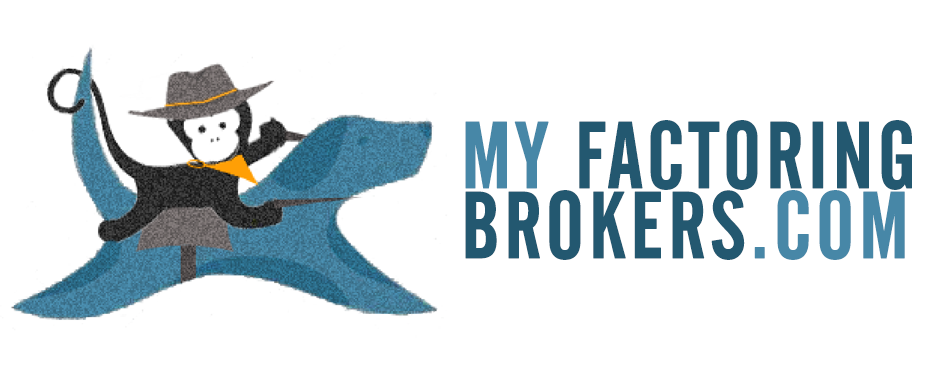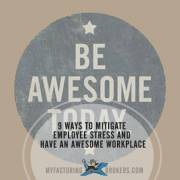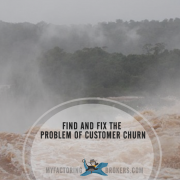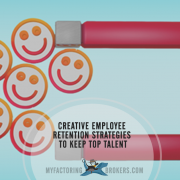The U.S. economy is nearing the full-employment threshold. Assuming continued economic growth will only increase competition among employers for top talent, here are three ways to keep top talent on board.
During Full Employment, You Need an Internal Marketing Plan to Keep Top Talent in Place
As the economy continues to grow, so will competition among U.S. businesses when it comes to retaining the most talented and effective position players and leaders within their organizations. The organizations that keep top talent in place have an advantage over rivals with higher employee turnover.
A recent Investors Business News daily feature headline asks whether we have hit the limit (a.k.a. “full employment”) when it comes to jobs in the U.S. The article explains that full employment does not mean there are no jobless, but refers to the lowest jobless rate that can be sustainable.
If it is true (or soon will be) that the current jobless rate will hold stead even as the economy continues a pattern of post-recovery growth, it could mean the onset of a new job-seekers market and increased competition among U.S. employers to hire and keep top talent in place.
What – if anything – have you done to make it less likely that your best employees would leave for greener pastures? What can you do?
Most business owners know they need to engage in brand marketing to external customers, investors and other key stakeholders; however, many business leaders fail to understand that they must market the organization to internal stakeholders – otherwise known as employees – as well.
www.businessdictionary.com defines internal marketing as: “Management philosophy of promoting the firm and its policies to employees as if they are the customers of the firm.”
It’s easy for busy business leaders to assume that staff are happy – right up until the moment one of their best employees leaves after receiving a better offer. It is a mistake to believe that money alone will cause a defection, but it is also a mistake to believe that there are not many other considerations which could tempt one of your most effective and valuable employees to leave.
Consider some of the statistics relative to employee engagement featured in the most recent State of the American Consumer report from Gallup:
- Companies with high level of engagement for both customers and employees enjoyed a 240% boost in performance-related business outcomes
- Only 46% of managers – less than half! – say they know what their company stands for and what differentiates the company from competitors
- Only 37% of employees said they know what their company stands for and what makes it different from its competitors
The question is this: If fewer than half of an organization’s leaders can accurately convey its mission, vision and points of differentiation, why would we expect that the company’s employees or customers would be able to do so?
U.S. business leaders that want to grow along with the economy and build a strong, sustainable brand well into the future need to fill the gap when it comes to marketing to employees with the same level of thoughtful strategy, benchmarks and measurable goals as they ascribe to the external marketing plan.
Infographic – 3 Keys to Keep Top Talent Happy and Loyal to Your Business
1. Be Competitive Enough
Being competitive doesn’t necessarily mean that an organization pays the highest wages. Rather, to be competitive, an organization needs to provide the best overall package – including any number of intangibles – in order to make it unlikely that a competitor would be able to convince valuable employees to jump ship. They keep top talent because they have a total compensation package that is hard to find anywhere else.

Look at the big picture and be sure that you are (a) addressing and (b) communicating the advantages your organization provides to its top talent in areas including:
- compensation (salary and benefits)
- corporate culture
- commute
- co-workers
Plus, employees who are considering leaving one organization for another will be facing a learning curve (i.e., it takes time to learn a new organization’s products, services, culture, etc.) Encouraging – and rewarding – staff for mastery in some area of expertise while also providing room for growth can be a real inducement to staying.
2. Consider the Unconventional
Just as a brand differentiates itself from competitors in order to attract external customers, an organizational culture should also be able to point to characteristics that make it unique from other work places. One way to turn working conditions into a competitive advantage in attracting and retaining top talent is to add elements that are unconventional, and therefore are not likely to exist in other organizations, in areas such as:
- dress code
- opportunity to work from home or telecommute
- enrichment (education and training)
- flexible hours
- time banks (where employees can trade, donate or ask for additional time off)
- benefit banks (where employees mix and match their own mix of benefits up to a set dollar limit)
3. Cultivate Connection
Brand advocates are customers who are connected with a brand to the extent that they will advocate for – or help promote – the brand to their own networks. A brand is unlikely to be able to develop external brand advocates if they cannot even win over the hearts and minds of their own employees!
An organization can create and cultivate emotional and intellectual connections with employees throughout their relationship, and even preceding it, during the recruiting and hiring process. From recruiting to on-boarding to on-going education and training, the investments made to communicate brand values, mission and vision could result in immeasurable benefit to the business.
In addition to communication from the business, there should also be a strategy in place that promotes communication to the organization from its employees; such as:
- implementing an employee suggestion system
- conducting employee surveys, communicating results and acting on recommendations
- soliciting employee preferences when changes are made to working conditions or work spaces
- inclusion of employees in long range planning and/or communication of results, goals and progress to all employees
You Might Also Like:










Trackbacks & Pingbacks
[…] You might also like: 3 Ways to Retain Top Talent […]
Leave a Reply
Want to join the discussion?Feel free to contribute!